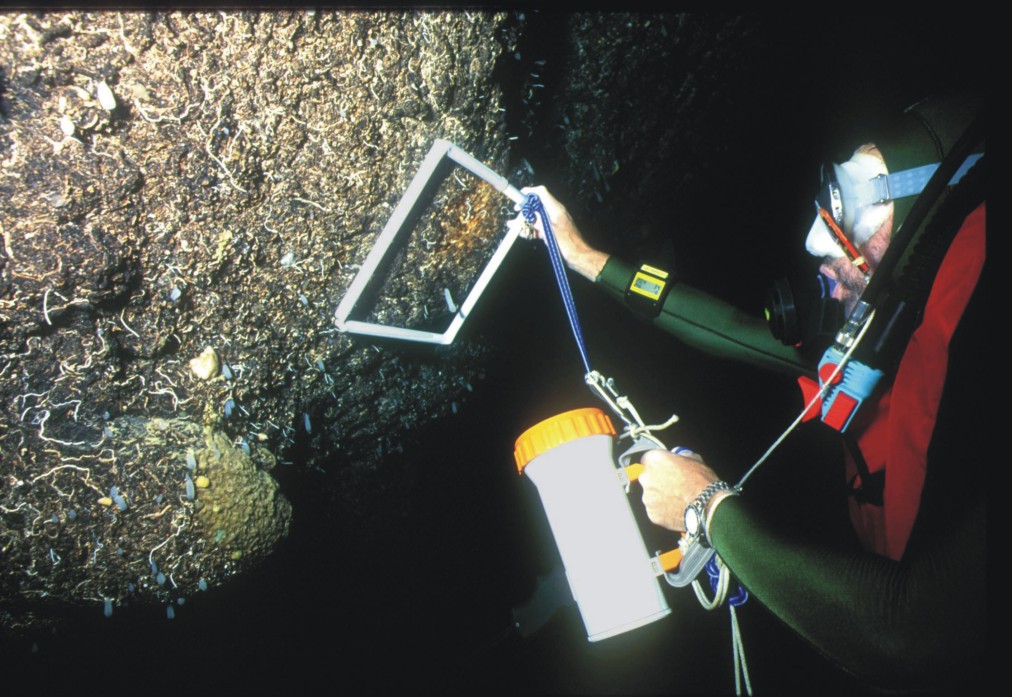Synoptic description of site:
Long cave in conglomerate layers below the cliff of Bec-de-l'Aigle Cape, exceptional for its thermal regime (cold homothermy) and a unique bathyal fauna in the littoral zone. |
Extensive description of site:
The 3PP cave, near La Ciotat, is a 120 m long tunnel in a conglomerate layer, with a deep mud layer on the floor. Due to its descending profile, with the entrance 15 m deep and the end 24 m deep, the cave traps by density a cold water mass and has a thermal regime of cold homothermy similar to that of the deep Mediterranean. | Habitats present:
| | Mud | Sand | Rock |
| Littoral | | | |
| Sublittoral | X | X | X |
| Seagrass beds | |
|
Description of fauna and flora:
There are typical faunal assemblages from shadowed and dark caves. Most remarkable are bathyal organisms, such as hexactinellid and carnivorous sponges, that have colonized the cave from a nearby deep canyon. |
Human impact:
There is no notable pollution. The cave is rarely visited by local divers. |
Facilities:
Facilities are available from the Centre d’Océanologie de Marseille (COM) 25 km distant. There is easy boat access from La Ciotat harbour (1 km). |
Available database and website:
A species inventory for several invertebrate groups (sponges, serpulid polychaetes, bryozoans, crustaceans) is available in the COM. |
Commitment and ongoing research:
The cave has been intensively studied by the COM for 11 years: continuous temperature recordings, species inventories, biodiversity researches, studies on the physiology, taxonomy and phylogeny of deep-sea species found in this “bathyal island in a littoral environment”. |
Involvements:
|
Additional Information:
Examples of references available: Boury-Esnault, N., J.G. Harmelin & J. Vacelet 1993. Les abysses méditerranéennes à 20 m de profondeur ? La Recherche 24(256 Les grands fonds sous-marins): 848-851.
Harmelin, J.G. & J. Vacelet 1997. Clues to deep-sea biodiversity in a nearshore cave. Vie et Milieu 47: 351-354.
Vacelet, J., N. Boury-Esnault & J.G. Harmelin 1994. Hexactinellid cave, a unique deep-sea habitat in the scuba zone. Deep-Sea Res., 1 41: 965-973.
Vacelet, J. & N. Boury-Esnault 1995. Carnivorous sponges. Nature 373: 333-335 |




